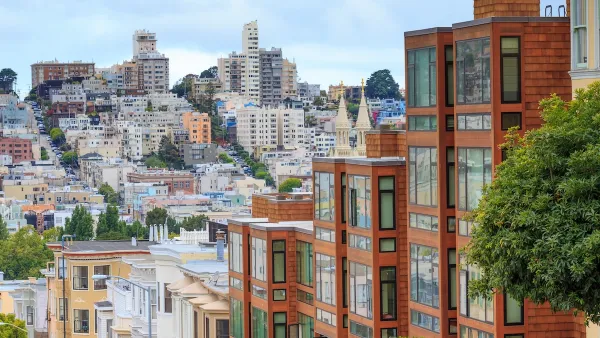Completed in 1791, the Mission Dolores is the oldest building in San Francisco. It has survived major earthquakes in the past, writes Alexis Coe, but preservationists are worried about its fate and have begun digitally preserving the landmark.
"It isn't a matter of if, but when," warns Andy Galvan, curator at the Mission Dolores. His great-great-great-great grandparents helped build the mission established under Father Junipero Serra, "the controversial Spanish Franciscan friar." Even though the historic structure underwent major conservation work from 1993 to 1995, notes Coe, there aren't enough funds to complete the full scope of necessary work before the next big earthquake. The mission is now being digitally preserved by CyArk, an Oakland-based nonprofit that "seeks to preserve cultural heritage sites through collecting, archiving and providing open access to data gleaned via laser scanning and digital modeling."
Elizabeth Lee, the operations director at Cyark, led a two-day "field capture phase" late last summer. "Using terrestrial scanners, a Leica C10 and the Faro Focus 3D," explains Coe, "she and her colleagues from CyArk started from the outside in, paying special attention to the cemetery which holds more than 5,000 remains, including the first native born governor of Alta California, Luis Antonio Argüello, and Charles Cora and James Casey, who were hanged by the infamous San Francisco Committee of Vigilance." They team also found "an abundance of material culture and environmental data" that "offered a glimpse into the building practices of the missions"; and a mural of abstract patterns and Christian imagery that would need to be fully documented. "I hope we'll never have to use it for reconstruction, but if we do, we'll breathe a sigh of relief," says Galvan.
CyArk has registered over 200 scans of the mission to be used in additional projects, including architectural drawings, 3D fly-through animation, and a mobile app. The digital preservation of the Mission Dolores was intended as a safeguard from future damages, but it has already helped 4th graders at state-wide public schools in their study of missions. "Every year, over 450,000 children are assigned a mission project," writes Coe, "but California is a big state, and a substantial number of 4th graders live far from any one of the 21 historic missions, meaning their projects must be completed with the aid of books or, realistically, the Internet."
"Digital technology makes a heritage site more relevant," Lee says. "In the next year, students visiting the Mission Dolores will be able to stand inside, iPad in hand, and click on the screen to pull up the view behind the reredos." However, she is "quick to point out that nothing can replace the experience of visiting a heritage site. It can, however, enhance it."
FULL STORY: Preparing for the Inevitable: Digitally Preserving San Francisco's Oldest Building

Planetizen Federal Action Tracker
A weekly monitor of how Trump’s orders and actions are impacting planners and planning in America.

Chicago’s Ghost Rails
Just beneath the surface of the modern city lie the remnants of its expansive early 20th-century streetcar system.

San Antonio and Austin are Fusing Into one Massive Megaregion
The region spanning the two central Texas cities is growing fast, posing challenges for local infrastructure and water supplies.

Since Zion's Shuttles Went Electric “The Smog is Gone”
Visitors to Zion National Park can enjoy the canyon via the nation’s first fully electric park shuttle system.

Trump Distributing DOT Safety Funds at 1/10 Rate of Biden
Funds for Safe Streets and other transportation safety and equity programs are being held up by administrative reviews and conflicts with the Trump administration’s priorities.

German Cities Subsidize Taxis for Women Amid Wave of Violence
Free or low-cost taxi rides can help women navigate cities more safely, but critics say the programs don't address the root causes of violence against women.
Urban Design for Planners 1: Software Tools
This six-course series explores essential urban design concepts using open source software and equips planners with the tools they need to participate fully in the urban design process.
Planning for Universal Design
Learn the tools for implementing Universal Design in planning regulations.
planning NEXT
Appalachian Highlands Housing Partners
Mpact (founded as Rail~Volution)
City of Camden Redevelopment Agency
City of Astoria
City of Portland
City of Laramie





























